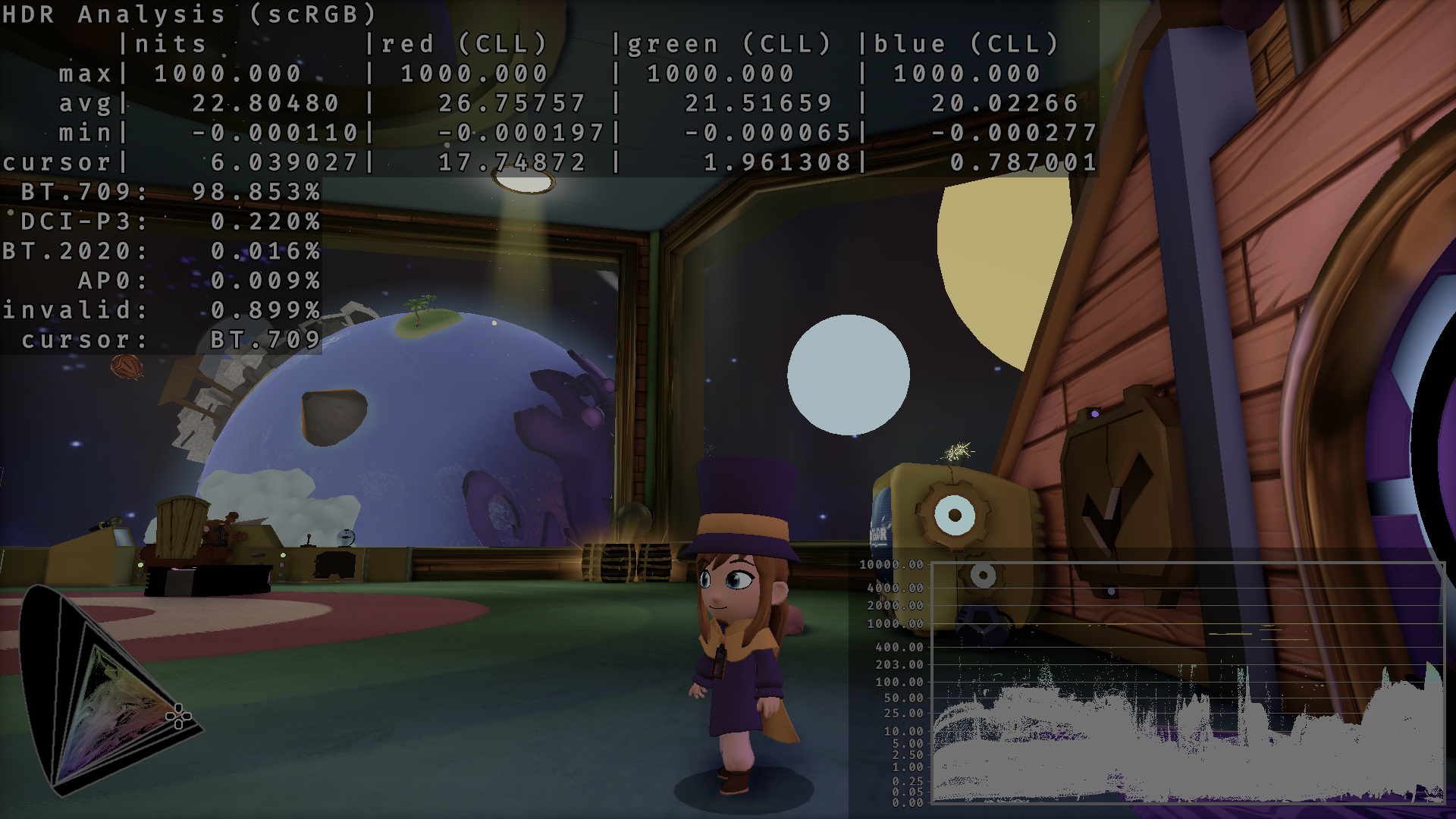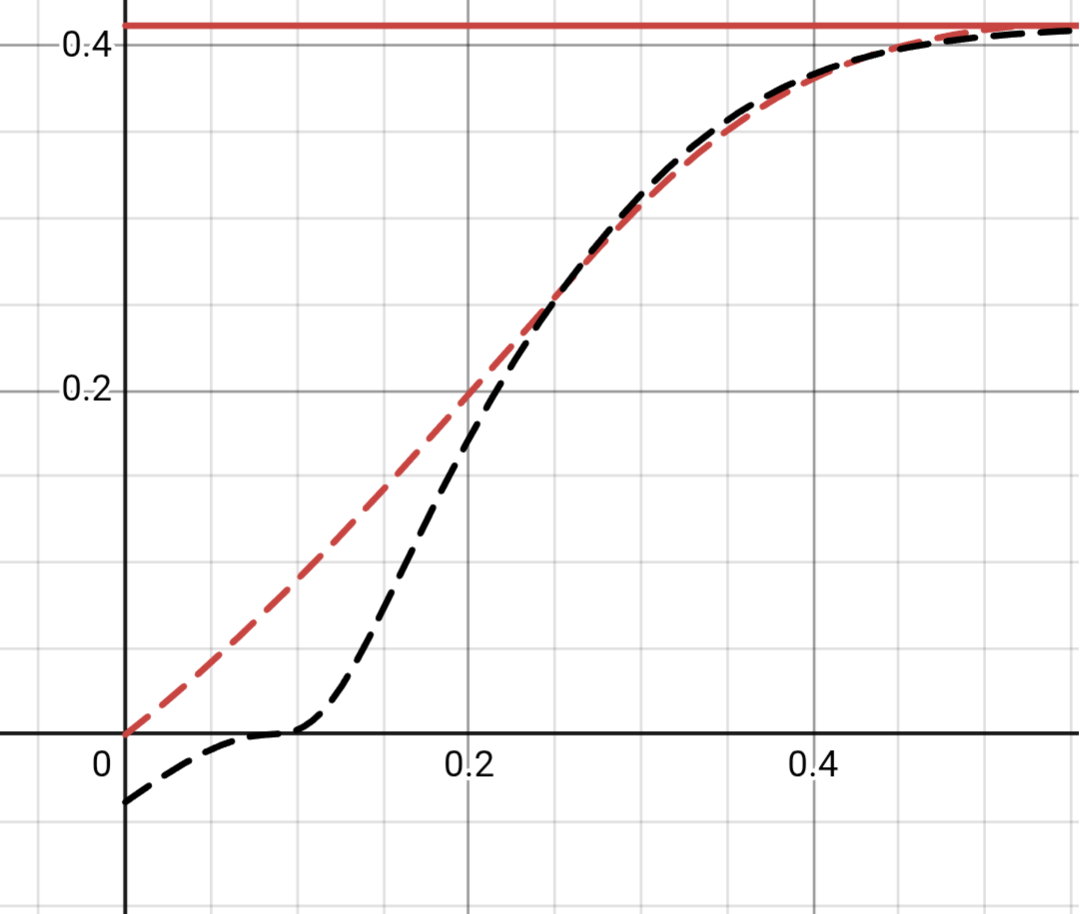The point is to show it’s uncapped, since SDR is just up to 200 not. It’s not tonemapped in the image.
But, please, continue to argue in bad faith and complete ignorance.
The point is to show it’s uncapped, since SDR is just up to 200 not. It’s not tonemapped in the image.
But, please, continue to argue in bad faith and complete ignorance.
From understanding my old GameBoy that had 4 AA batteries in alternating rotation, that had 6V (1.5V each battery). Chaining positive and negative together increased the voltage.
Since this has them pointing both up, it’s just 1.5V but it’s as if you put a half sized battery.
Basically, the same, just less amperage because of a smaller battery (if compared to 2 of the same).
tl;dr: same, but half capacity.


He should argue his grievances to some sort of tribunal presided over by one or several judges in which legal issues and claims are heard and determined: one specifically that specializes in mammalians of the marsupial sort.
This is a trash take.
I just wrote the ability to take a DX9 game, stealthy convert it to DX9Ex, remap all the incompatibility commands so it works, proxy the swapchain texture, setup a shared handle for that proxy texture, create a DX11 swapchain, read that proxy into DX11, and output it in true, native HDR.
All with the assistance of CoPilot chat to help make sense of the documentation and CoPilot generation and autocomplete to help setup the code.
All in one day.



Helm Dawson tonemapper is a filmic tonemapper built by EA years ago. It’s very contrasty, similar to ACES (What Unreal mimics in SDR and uses for HDR).
The problem is, it completely crushes black detail.
https://www.desmos.com/calculator/nrxjolb4fc
Here’s it compared to the other common Uncharted2 tonemapper:

Everything under 0 is crushed.
To note, it’s exclusively an SDR tonemapper.
I’ve found this tonemapper in Sleeping Dogs as well and when modding that game for HDR, it was very noticeable there how much it crushed. Nintendo would need to change the tonemapper to an HDR one or, what I think they’ll do, fake the HDR by just scaling up the SDR image.
To note, I’ve replaced the tonemapper in Echoes of Wisdom with a custom HDR tonemapper via Ryujinx and it’s entirely something Nintendo can do. I just doubt they will.


“If the answer is yes, you should be incredibly proud of yourself.” (My guess)


I decompiled Echoes of Wisdom. It uses the pretty horrible Hejl Dawson tonemapper. Pretty sure the HDR is going to be fake inverse tonemapping.
DidYouKnowGaming knows me so well they’ve started titling their videos: 3 hours of GameCube facts to fall asleep to.
Lan ports have been standard, thankfully, since the Switch OLED.


Had this exact thought. But number must go up. Hell, for the suits, addiction and dependence on AI just guarantees the ability to charge more.


(X) Doubt.
All that matters is loyalty. They may vote in a certain manner for the majority of cases, but what matters are the critical cases of interest to their overlords.
Sure, but what does ChatGPT say?


Only reason I haven’t modded HDR for this game is because it’s DX9 and a pain to mod. (I already did GTAV - Enhanced and GTA Trilogy Remastered since it’s UE). If they make a new port for PC it’ll be able to complete the set.


Definitely not. NoJS is not better for accessibility. It’s worse.
You need to set the ARIA states over JS. Believe me, I’ve written an entire component library with this in mind. I thought that NoJS would be better, having a HTML and CSS core and adding on JS after. Then for my second rewrite, I made it JS first and it’s all around better for accessibility. Without JS you’d be leaning into a slew of hacks that just make accessibility suffer. It’s neat to make those NoJS components, but you have to hijack checkbox or radio buttons in ways not intended to work.
The needs of those with disabilities far outweigh the needs of those who want a no script environment.
While with WAI ARIA you can just quickly assert that the page is compliant with a checker before pushing it to live.
Also no. You cannot check accessibility with HTML tags alone. Full stop. You need to check the ARIA tags manually. You need to ensure states are updated. You need to add custom JS to handle key events to ensure your components work as suggested by the ARIA Practices page. Relying on native components is not enough. They get you somewhere there, but you’ll also run into incomplete native components that don’t work as expected (eg: Safari and touch events don’t work the same as Chrome and Firefox).
The sad thing is that accessibility testing is still rather poor. Chrome has the best way to automate testing against the accessibility tree, but it’s still hit or miss at times. It’s worse with Firefox and Safari. You need to doubly confirm with manual testing to ensure the ARIA states are reported correctly. Even with attributes set correctly there’s no guarantee it’ll be handled properly by browsers.
I have a list of bugs still not fixed by browsers but at least have written my workarounds for them and they are required JS to work as expected and have proper accessibility.
Good news is that we were able to stop the Playwright devs from adopting this poor approach of relying on HTML only for ARIA testing and now can take accessibility tree snapshots based on realtime JS values.
Came here for this. Pickles are like a researcher’s??? Progeny? A researcher’s what? I must know.
Also something about Harry Potter in the first lines.
Edit. It’s grumpy! But I don’t know what!


Always removed in two, there are. No more. No less.


No, if you click a link that brings you to or from a site your IP is logged
No, clicked links that bring to a site do not log your IP. For that you would have to add some sort of JavaScript to intercept the click and then have some JavaScript execute a HTTP Request that passes that information (eg: HTTP POST). Then the IP can be grabbed via that request by the receiving server. Or more importantly, a tracking cookie.
When clicking a link, the browser may add to Origin header on the HTTP request (HTTP HEAD/GET) that goes to the link’s server. Or the link itself can have UTM parameters, but there’s no guarantee that ever gets back to the original server.
But the point is if you have a page with 1000 links on it, the server that serves you the page doesn’t know which one you clicked without JavaScript or reframing the link to go elsewhere, which is why this post exists.
We would have also accepted a bluer yellow.